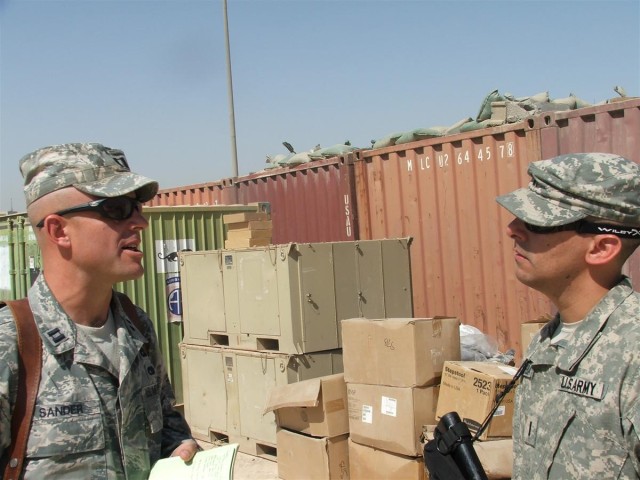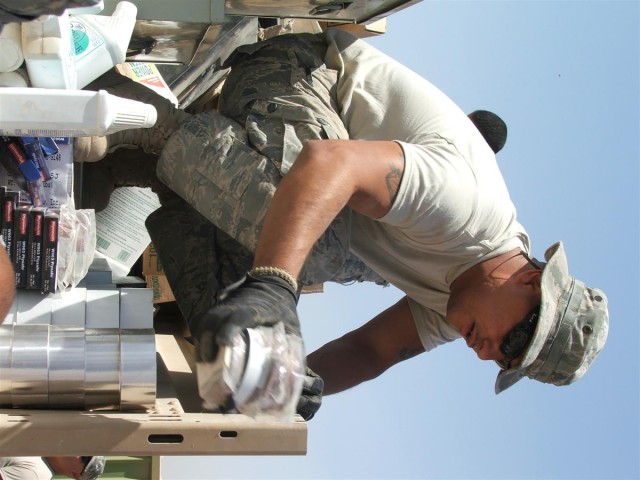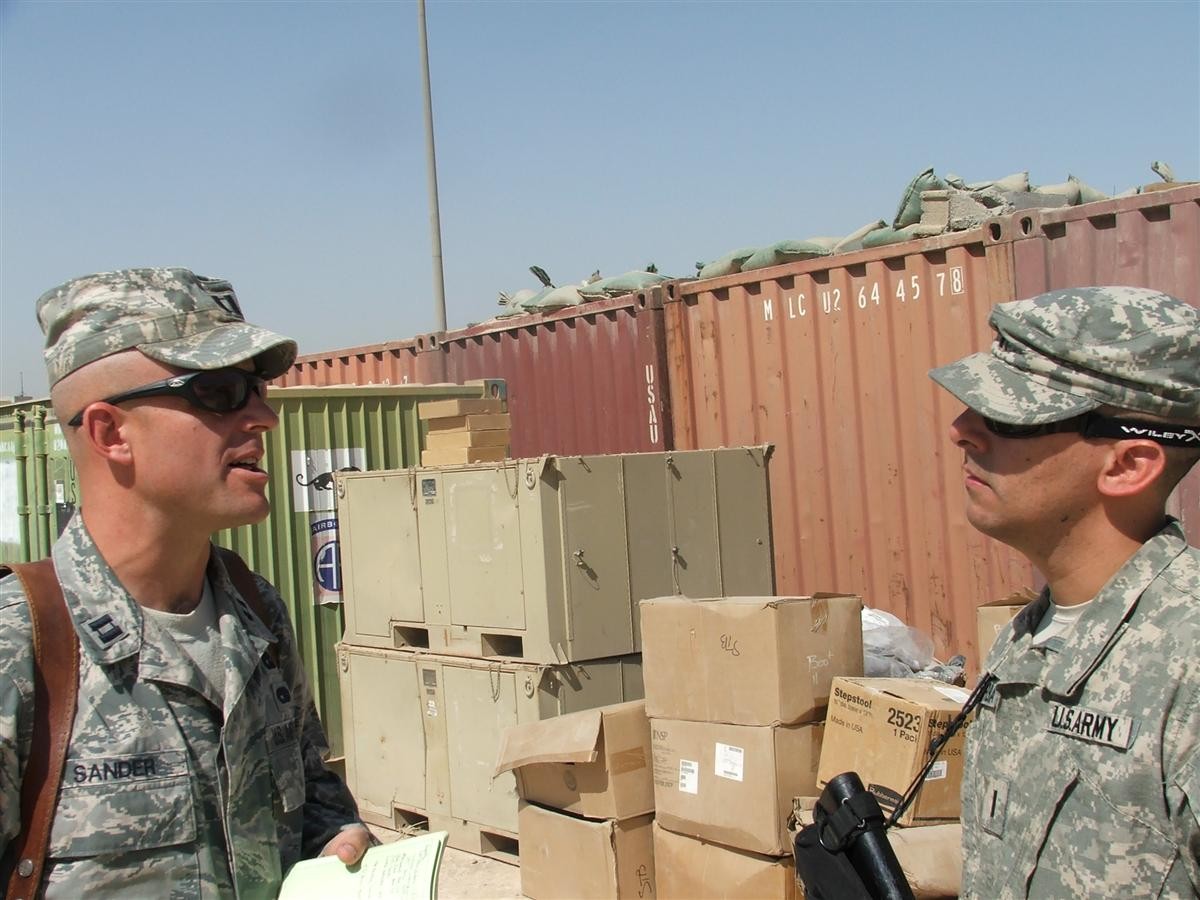JOINT SECURITY STATION LOYALTY, Iraq - As part of the responsible drawdown of forces in Iraq, leaders are presented with a number of challenges.
One of these challenges is, 'what do we do with all this stuff'' Excess property found on installations is diverse and often includes repair parts, obsolete computers, office supplies, and literally the kitchen sink.
Often, the excess inventory is not thoroughly inventoried or organized. Units are faced with the time-consuming and daunting task of inventorying the supplies individually-one piece at a time.
The U.S. Air Force and Task Force 586 working jointly with the 3d Sustainment Command (Expeditionary) fielded four Mobile Redistribution Teams to overcome this exact problem.
MRTs travel to where the excess inventory is located. They sort through the excess, determine what has value and what is still usable. They also determine what is scrap.
Then, the teams organize the excess into shipping boxes and send it to the appropriate location for further processing and reallocation.
"It's zero pain," said U.S. Air Force Capt. Michael J. Sander, describing the ease in dealing with excess inventory for requesting units. Sander, the MRT 1, officer in charge said there is no paperwork required for a unit requesting the MRT to sort their excess property.
The unit requests the MRT through the 3d ESC. The 3d ESC then sends the mission to an MRT and the MRT arrives at the location to handle the process the excess inventory.
U.S. Army 1st Lt. Felipe T. Barrera, Operations Officer, Support Operations Reset and Redistribution Section, 3d ESC, said, "It's been totally positive [the reaction to the MRTs]; of course that's our goal with the upcoming responsible drawdown.
" "Up to three years ago, these items stayed behind or sometimes ended up in a burn pit, because there simply wasn't a good means to redistribute them," said Sander. "The MRT is to make sure it [excess inventory] ends up back in the supply chain and tax payer dollars are effectively utilized."




Social Sharing